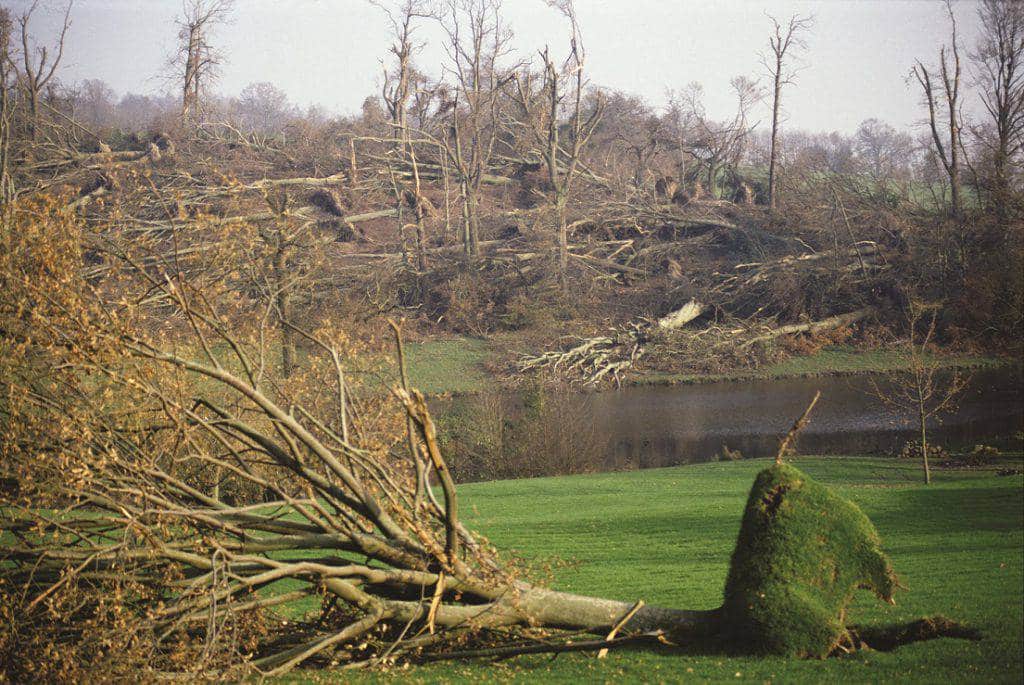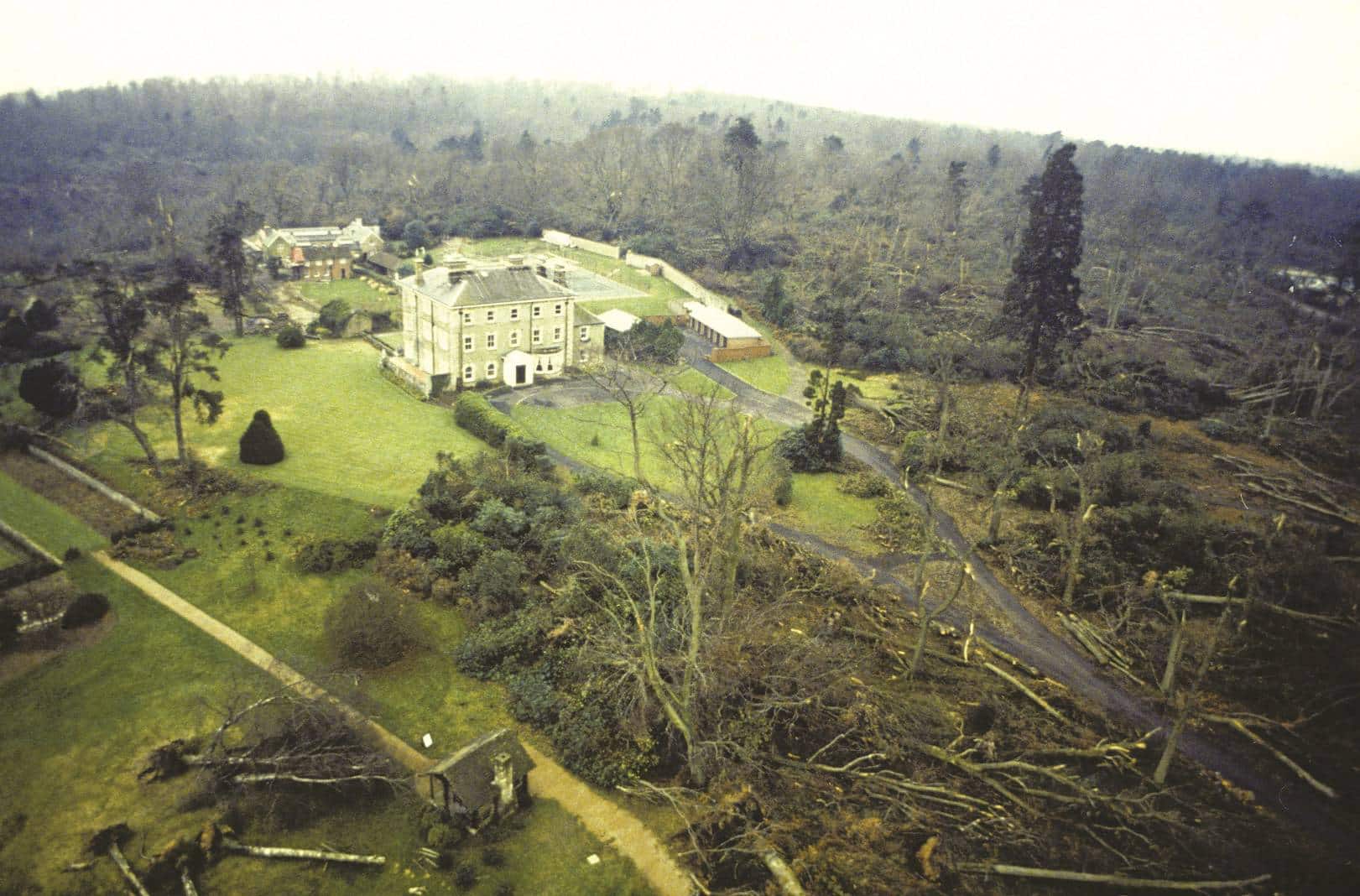TO MARK the 30th anniversary of the Great Storm of 1987, The National Trust is providing a raft of information about the hurricane that struck the South-East on that fateful night.
Winds reached up to 110mph between 2-6am on October 16, 1987. The storm claimed 20 lives, felled 15 million trees and caused £1.5billion of damage.
Weather presenter Michael Fish infamously said: “Apparently, a woman rang the BBC and said she heard there was a hurricane on the way. Well, if you’re watching, don’t worry, there isn’t.”
Some 350,000 trees were lost on 58 of the Trust’s properties across 3,000 acres of land. Winston Churchill’s home, Chartwell, and Emmetts Garden near Sevenoaks were among the worst affected.
“It was a battle zone,” said gardener Alan Comb, who started work at Emmetts Garden a week after it lost 95 per cent of its woodland. “There were trees sticking up like totem poles.”
Toys Hill, former home of National Trust founder Octavia Hill, near Emmetts Garden, lost 98 per cent of its trees, with fallen timber piled 40 feet high.
Tom Hill, the National Trust Trees and Woodland Officer in the South East, said: “It’s hard to comprehend the scale of the damage. The statistics, though stark, can’t do justice to the heartache of our rangers, gardeners, volunteers and local communities as they woke up to a scene of chaos.”
But Mr Hill stressed that because it was an entirely natural occurrence, it proved highly significant in how the landscape has recovered.
“We’ve witnessed the natural response to this kind of phenomenon in the way that nature has healed and restored itself, alongside the extensive conservation carried out by our teams,” he said.
The Great Storm and its aftermath was a chance for the Trust to re-evaluate the way it works in the outdoors and manages its woodlands.
At Toys Hill, the highest point in Kent, some of the devastated areas were cleared, others were replanted, and a non-intervention zone was left alone to regenerate naturally. In the areas that were left untouched, trees that seeded naturally are developing faster than those that were planted.
Light allowed in by the removal of so much of the canopy caused dormant seeds to burst into life, inc- luding native clematis, honeysuckle and heather – unseen in the area for more than a century.

Wildlife also benefitted in the aftermath. The woodlark and nightjar population increased, and little owls, tawny owls, buzzards, hobbies and sparrow hawks exploited the open woodland.
More than a third of the Trust’s 62,000 acres of woodland nationwide lies in London and the South East. Mr Hill added: “Today we work more closely with natural ecological processes and, where possible, will allow damaged woodland to regenerate naturally. It’s vital that we continue to evolve our approach to woodland management to help it to thrive.”
There have been other benefits reaped from the ravages of the Great Storm. New views were opened up in backdrops at venues like Chartwell and Scotney Castle.
Fallen trees exposed tree rings hidden for centuries, enabling the Trust to date them and reveal more about the history of its estates.
At Emmetts Garden, the thinning-out of flower beds which were over-planted after the storm has provided around 1,200 cuttings for the Trust’s Plant Conservation Centre.
“It’s the first time in 24 years anything’s gone from us to the centre” said Mr Comb. “Should we lose a plant at Emmetts we’ll always have the original.”
DEVASTATION
At Emmetts Garden, 95 per cent of the woodland was destroyed
FRESH OUTLOOK
New views opened up at Chartwell
‘It’s vital that we continue to evolve our approach to woodland management to help it to thrive’








